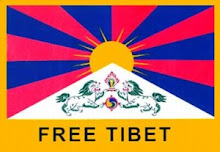 A wonderful collaboration between Turkish guitar master Erkan Ogur and Armenian duduk champion Djivan Gasparyan. (Follow the links for a brief biography of the two artists). If you want to discover how this cd came into being, read on…
A wonderful collaboration between Turkish guitar master Erkan Ogur and Armenian duduk champion Djivan Gasparyan. (Follow the links for a brief biography of the two artists). If you want to discover how this cd came into being, read on…
 «La Turquie de Hasan Saltik est plurielle. Elle est à la fois kurde, ottomane, arménienne. Depuis une dizaine d'années, ce producteur s'efforce de faire connaître, grâce à la société qu'il a créée, les musiques de l'Anatolie d'hier et d'aujourd'hui. Avec l'espoir qu'à travers elles la Turquie si jacobine accepte enfin ses différences. Fruit d'un minutieux travail d'archéologie musicale, son catalogue compte à présent 300 titres, qui vont des chants révolutionnaires à la musique classique ottomane. «Il y a, dit-il, en Anatolie une richesse formidable qui ne demande qu'à être découverte.»
«La Turquie de Hasan Saltik est plurielle. Elle est à la fois kurde, ottomane, arménienne. Depuis une dizaine d'années, ce producteur s'efforce de faire connaître, grâce à la société qu'il a créée, les musiques de l'Anatolie d'hier et d'aujourd'hui. Avec l'espoir qu'à travers elles la Turquie si jacobine accepte enfin ses différences. Fruit d'un minutieux travail d'archéologie musicale, son catalogue compte à présent 300 titres, qui vont des chants révolutionnaires à la musique classique ottomane. «Il y a, dit-il, en Anatolie une richesse formidable qui ne demande qu'à être découverte.»
Originaire de Tunceli, dans l'est de la Turquie, il a 11 ans lorsque ses parents s'installent à Istanbul. Il poursuit pendant un an des études au conservatoire. Mais la vie, pour toute la famille, se révèle difficile et l'enfant se retrouve rapidement dans la rue en train de vendre des simit, des petits pains ronds couverts de sésame que les istanbuliotes mangent à toute heure. Il sera aussi peintre ou maçon sur différents chantiers. Jusqu'à ce jour de 1991 où, grâce à un emprunt de 500 euros, il loue une boutique de 4 mètres carrés à Unkapani, le temple de la production musicale d'Istanbul, et crée la société Kalan. Ses premiers poulains sont un groupe de musiciens d'extrême gauche. L'affaire marche bien et, grâce aux bénéfices engrangés, il va enfin pouvoir réaliser son rêve: découvrir et faire découvrir les mélodies d'Anatolie dans leur diversité.
Sa première production, en 1992, est un disque de chants populaires arméniens. Le pari est risqué, mais l'album se vend bien. Les Turcs découvrent avec intérêt la proximité qui les lie à cette musique et à ce peuple. Sur sa lancée, Saltik produit peu après la première cassette de chants kurdes. Puis, en 1998, le premier CD de musique laze, un peuple de la mer Noire originaire du Caucase. Il réédite aussi des morceaux composés par les musiciens occidentaux pour le sultan lors de la guerre de Crimée ou fait revivre les chants oubliés des juifs séfarades de Turquie.
Kalan est aujourd'hui une entreprise prospère qui s'autofinance. Son catalogue est un démenti au nivellement unitaire, encouragé par un Etat centralisateur à outrance. Il permet aussi aux Turcs, plus habitués aux sonorités des variétés anglo-saxonnes, de redécouvrir un véritable patrimoine culturel. Le siège de la société est au cœur d'un quartier qui compte de nombreuses maisons de production. On y croise, tout près des souvenirs de l'ancienne Byzance, des vedettes de la chanson et des adolescents rêvant d'enregistrer leur première cassette. Une proximité qui plaît à Saltik, dont le bureau donne sur la Corne d'Or. «L'âme de la vieille ville vit encore, dit-il. Les vieux bâtiments sont là, blessés et silencieux, mais ils ne se sont pas encore rendus.»
Saltik «tire les gens vers leurs racines». Fasciné par la diversité, le producteur voudrait recréer la fantastique interpénétration des traditions culturelles née de l'empire ottoman. Il a ainsi rassemblé dans un même disque baptisé Fuad le vieux joueur arménien de duduk - une flûte traditionnelle aux accents mystiques - Gasparyan et Erkan Ogur, un musicien turc virtuose de tous les instruments à cordes d'Anatolie. Pour Lari Dilmen, directeur de projets chez Kalan, Saltik est quelqu'un qui «tire les gens vers leurs racines». Dilmen, fils d'un juif d'Edirne et d'une Géorgienne, a proposé à Saltik de faire renaître la musique religieuse que jouaient ensemble, dans les synagogues, au XVIe siècle, des soufis et des juifs de Thrace. Saltik a financé pendant deux ans les recherches et les répétitions qui ont permis à ces partitions oubliées de revoir le jour. Le disque a été baptisé Maftirim. Ce sont des recherches similaires qui ont permis à Birol Topaloglu de faire renaître la musique laze. Topaloglu n'était pas, à l'origine, un professionnel de la musique. Mais, quand il a proposé son projet à Saltik, celui-ci s'est enthousiasmé et lui a donné les moyens de le réaliser. Aujourd'hui, il parcourt le monde pour donner des concerts (1). Et les diplomates turcs ont même appris à se servir du trésor de la maison de production de Saltik. L'ancien ministre des Affaires étrangères, Ismaïl Cem, avait ainsi pris l'habitude de distribuer des disques de Kalan à ses homologues européens pour leur prouver que la diversité culturelle de la Turquie n'était pas aussi mal vue que cela des autorités...» (Nükte V. Ortaq, L'Express, 07 août 2003 – MEDEA)
Link in comments (always appreciated)
 «The Meters defined New Orleans funk, not only on their own recordings, but also as the backing band for numerous artists, including many produced by Allen Toussaint. Where the funk of Sly Stone and James Brown was wild, careening, and determinedly urban, the Meters were down-home and earthy. Nearly all of their own recordings were instrumentals, putting the emphasis on the organic and complex rhythms. The syncopated, layered percussion intertwined with the gritty grooves of the guitar and organ, creating a distinctive sound that earned a small, devoted cult during the ‘70s, including musicians like Paul McCartney and Robert Palmer, both of whom used the group as a backing band for recording. Despite their reputation as an extraordinary live band, the Meters never broke into the mainstream, but their sound provided the basis for much of the funk and hip-hop of the ‘80s and ‘90s.» (AMG)
«The Meters defined New Orleans funk, not only on their own recordings, but also as the backing band for numerous artists, including many produced by Allen Toussaint. Where the funk of Sly Stone and James Brown was wild, careening, and determinedly urban, the Meters were down-home and earthy. Nearly all of their own recordings were instrumentals, putting the emphasis on the organic and complex rhythms. The syncopated, layered percussion intertwined with the gritty grooves of the guitar and organ, creating a distinctive sound that earned a small, devoted cult during the ‘70s, including musicians like Paul McCartney and Robert Palmer, both of whom used the group as a backing band for recording. Despite their reputation as an extraordinary live band, the Meters never broke into the mainstream, but their sound provided the basis for much of the funk and hip-hop of the ‘80s and ‘90s.» (AMG)





scape.JPG)













































